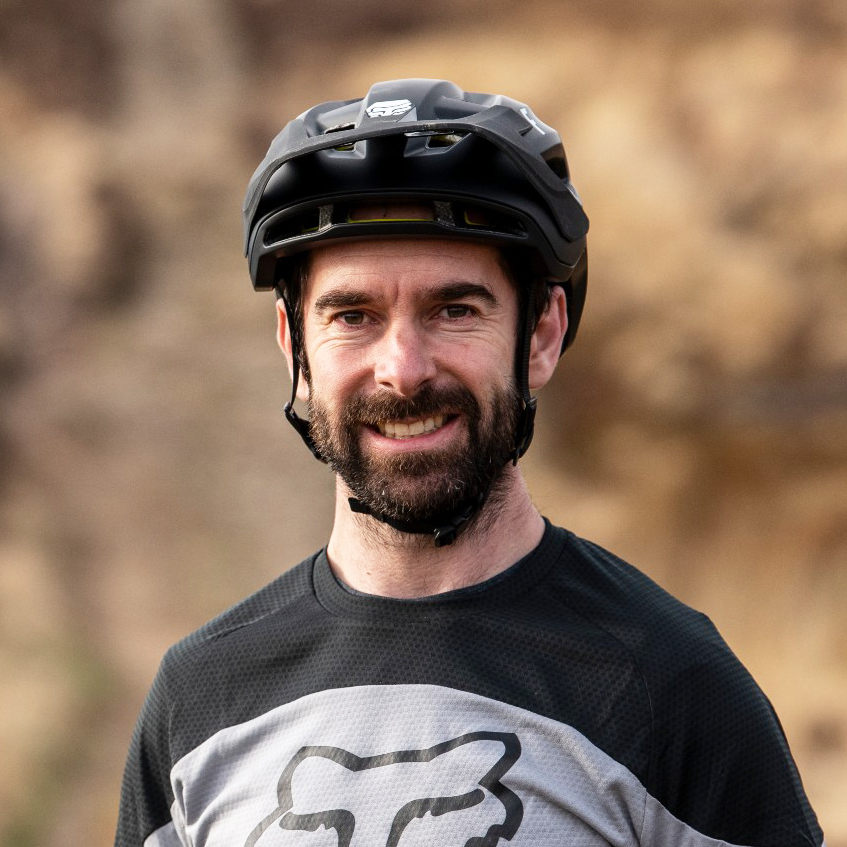This Canyon’s air sprung suspension, single-crown fork and 11-36t cassette scream versatility – which is great if you’re looking to do a little more than just ride downhill tracks. The question is, is the level of compromise just too much when it comes to hurtling down the hillside?
Frame and equipment: not much compromise on kit
When it comes to the angles, there's no doubt that Canyon has done its homework. The TrackFlip chips in the lower shock mount enable switching between 195mm (7.7in) and 210mm of (8.3in) travel, and two geometry settings. The ‘low’ mode offers an aggressive 63-degree head angle and corner carving friendly 340mm bottom bracket height, while the ‘high’ setting steepens up the head angle to a more responsive 64 degrees and bumps the BB up to 350mm.What will draw many riders’ attention is the Cane Creek DB Air rear shock. Nestling slap bang in the middle of the front triangle, this highly tunable damper promises to be the life and soul of the Canyon’s four-bar suspension platform. With high- and low-speed rebound and compression adjustment, it’s best to double check the base tunes on Cane Creek’s website before you get fettling.

The Cane Creek shock offers plenty of effective damping adjustmentWe opted for the Dropzone version of the Torque DHX, not the dual-crown forked Whipzone, because it offers a bit more freedom thanks to its wider gear range and lighter build. That means easier pedalling on long descents and more chuckability when you hit the bike park, making it a great start point for anyone getting into DH.Canyon sells bikes direct through its website, which means the steeds' spec sheets tend to be impressive. The Torque DHX’s metal frame also saves you a few quid that get shovelled back into the parts list and, for those still not sure about using carbon for DH, potentially adds some peace of mind too.

The Fox 36 is a well damped, solid feeling fork that’s well up to the job despite not having twin crownsAt this sort of money, there tends to be a lot of compromise, but Canyon hasn’t scrimped. The 180mm (7.1in) Fox 36 Float RC2 fork may not be a downhill-specific number, but this thing can take a pounding. It has a stiff and accurate chassis, is reasonably light (especially compared with its dual-crown counterparts) and easy to tune, and also syncs nicely with the shock.The Maxxis rubber combo – a Super Tacky compound High Roller II up front and faster rolling Minion DHF out back – helps with grip, the wide bar and stumpy stem are a great pairing for accurate, lively steering, and it’s hard to fault the SRAM X9 1x10 gearing and Avid Elixir 7 Trail brakes.
Ride and handling: a mostly impressive series of compromises
At 15.32kg (33.77lb) – impressive for a bike with these intentions – it doesn’t take much to get the Torque DHX moving, especially on mellower tracks, and before you know it, you can start making the most of its nimble handling. The Canyon is definitely less ‘point and plough’ in character than a full-on downhill rig, and is happier skipping from line to line, providing just the right amount of feedback through your feet and hands to let you know what’s going on under your wheels. It’s by no means a harsh ride though –the suspension feels balanced and supportive when things get rougher.
We spent some time playing with sag and air pressures to get the shock dialled in. The breakaway force required to get it moving is noticeable, and it can feel a little notchy off the top, but once into its sag, the DB Air is massively capable. There’s plenty of support when you load the bike through the pedals when carving a berm or compressing into a take-off. Initially, the back end hung up a little on square-edged hits, but a bit of fettling remedied that for the most part. If you’re not a confident shock fettler, it could take some time to set the shock up for your riding though.

Out back, Minion DHF rubber helps things keep rolling smoothly
Fast flowing trails littered with natural features and jumps are where the Torque DHX shines, straddling the line between the agile feel of a trail bike and the big-hit capability of a DH bike. Pick it up and plant it on your line and it’ll deal with whatever’s under its wheels. Huck the bigger jumps and the back end is progressive enough to deal with a flat landing or two with little fuss. It’s chuckable yet stable in the air and would be a confident bike to hammer about the bike park on.
The compact 425mm chainstays and reasonably low front end make it easy to manoeuvre the Canyon down slower, more technical trails. Slot it through an awkward gap in the trees and set yourself up on an off-camber high line and the Maxxis will help you stay where you need to be too. When things get steeper though you’ll find yourself hanging off the back holding on rather than really attacking the trail. The slack head angle and supportive, well damped fork help to boost confidence, but the short front end is really noticeable. Shorter riders would be well advised to size up and anyone over 6ft is likely to struggle with the sizing.
For a first-time downhill rider, the Canyon packs one hell of a punch. The suspension and angles are impressive, it has some fantastic components, handles all but the most extreme tracks with relative ease and doesn’t cost a fortune. And if you fancy a bit of an adventure, it wouldn’t be out of place screaming down the mountainside at the Megavalanche.






